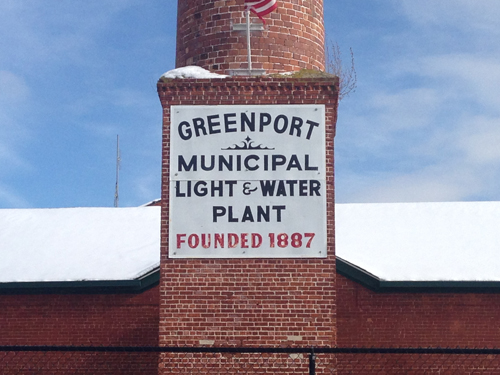Year-round shops in Greenport feeling hurt over fee

Village officials say they had no choice in the matter, but some local business owners are crying foul over how the village recouped a $108,000 power plant penalty from ratepayers last year.
The village incurred the New York Power Association penalty in September for failing to test its generators by a deadline set weeks prior. The charge was passed on to ratepayers without notice and it was later discovered that village electric customers paid a percentage of the fee based on September usage in their next month’s bill.
And with many stores closing their doors on or before Labor Day weekend, year-round business owners are now arguing that seasonal businesses didn’t pay their fair share of the fee — and that the village should have considered that before collecting.
“I just don’t know how they can justify assessing the bill on people only open in the winter months, as opposed to all the businesses that close and all the second-home residences, which were presumably not using as much electricity during the winter months,” said Terry Keefe, whose family owns Silver Sands Motel. “It was one of the coldest winters on record; businesses were suffering because people weren’t coming out here. And they assess this extra amount.”
It wasn’t the village’s idea to charge businesses and residents based on September usage, village administrator Paul Pallas said. Rather, a NYPA policy mandated the penalty fees be paid that way.
“When we incur a bill it is passed on through the purchase power adjustment the following month,” he said. “It is not really our decision to make. There is no mechanism for us to do it any other way.”
Rena Wilhelm, owner of The White Weathered Barn on Front Street, said the lack of notice about the penalty or an explanation for why it was assessed in September wasn’t only cause for confusion and distrust, its timing hurt year-round businesses.
“The average citizen or business owner, unless familiar with power authorities and utility billing, was left with a number of confusing explanations regarding the increase,” Ms. Wilhelm said. “Regardless of the policy, those of us who stay open already struggle throughout the winter, where some other merchants just take advantage of the fact that this is a tourist area and make their money during the season and close.”
“There should be some kind of advantage to living and working in a small town,” Mr. Keefe said. “There should be some warmth. There used to be.”
Neither Mr. Keefe nor Ms. Wilhelm would disclose how much the fee cost them or how much their bills spiked when the penalty was assessed.
Moving forward, Mr. Pallas, who began working for the village in March and also serves as president of the New York Association of Public Power, said officials will be more transparent with any concerns regarding the village power plant, including the ongoing $5.8 million project to modernize the Moores Lane facility.
Concerned with the slow pace of upgrades at the electric plant, NYPA in November demanded more oversight of the village system in the form of more regular progress reports and potential rate adjustments for customers.
Mayor David Nyce said in February the first phase of the project is complete and that the most recent test of the village’s generators was finished on time.
The public can expect to learn more about the project’s second phase during the Village Board’s next regular meeting on Tuesday, May 27, when the village’s contractor on the project, Bob Braun of Genesys Engineering, will address board members.







